Yves Chaudouët
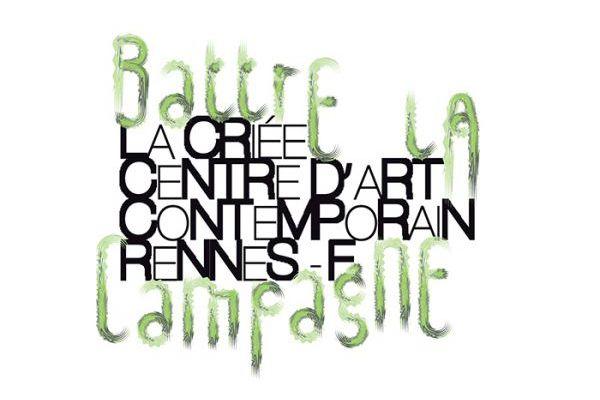
Since her arrival as director of La Criée, Sophie Kaplan has introduced a cycle of three “seasons”, inspired by Raymond Queneau’s poetic triptych: Courir les rues [Run the streets]– Battre la champagne [Scour the countryside] – Fendre les flots [Cleave the waves]. An artist is “associated” with the preparation of each season. This innovative method of collaboration, putting artists even more “at the centre of things”, also ushers in a new way of working over time, very close to the creative process. Jann Kopp chose the first season, Ariane Michel the third.
Yves Chaudouët, already identified for his relations to the aquatic world, preferred the middle season. In the centrifugal movement made by the Queneau and La Criée triptych, what was involved was getting away from the city, and going into the surroundings, from Rennes Métropole to the countryside…
If Sophie Kaplan asked Yves Chaudouët to deal with the “Battre la campagne” season, it was probably because: “As an artist-cum-gardener, Yves Chaudouët can give one and the same subject different forms, and make one and the same object undergo numerous transformations. In a reflexive movement, he makes the creative process the tangible stuff of his works, be they literary, pictorial or spectacular. The countryside that Yves Chaudouët scours is very varied: it is wild, made up of rocks, animals and tall grass; it is criss-crossed by people seeking clues, gleaners and mad people; it is tamed, built on, and cultivated; it seethes with lives, and boredom, too, at times; it has immense skies and unsuspected areas.
For the “Scour the countryside” season, Yves Chaudouët proposed an exhibition which spills over beyond the walls of La Criée, and spreads across the Rennes countryside, inviting to his table his theatre company and other fertilizers, initiating study days, and more broadly fuelling the programme with his interests, ideas and research.”
“My first pictures were either portraits or nocturnal landscapes painted on very large formats, based on images from writings and films. While hardly leaving the walls of my studio, I in a way made windows in it, giving onto a gloomy and windy horizon, where a last gleam pierced the clouds and lit up a tree, at most a few coppices.
One day, in 1995, in the course of that work, I went out. I wanted to go and see, in the real landscape, what was underpinning my huge romantic fantasies. Equipped with a camera whose lenses were as solemn as my intentions of the day, I crouched down over lichens, peony shoots, mushrooms, ferns, and springs, as well as all sorts of everyday curiosities growing between city cobblestones and in large numbers in the wild areas of the Cantal region where I was setting up home. Then guided by certain peasant neighbours who, like wise grammarians, taught me an essential thing or two for reading forests, valleys, water-courses, and hills, I became close to them, bartering colours and lenses for more botanical tools.
That “experience” of the landscape stayed with me. I abandoned those immersive formats that had become superfluous, and any tool that was not portable. It was the start of an ever lighter journey during which I crossed paths with Sophie Kaplan. I think she had glimpsed me in the distance on a path, observing the journey. So for a whole season at La Criée I am going to try and connect the things that I have gleaned in the heart of those landscapes, first of all by painting them, then by being in them. But can we call that “countryside”? A first question, perhaps, among the many that we will raise, because what essentially wafts from the expression “Scour the countryside”, mischievously used by Queneau, is that it can be interpreted. So, why not let us remember its thoroughly poetic, exemplary capacity to question us, and not let the lava solidify.”
I. A l l e r dehors exhibition
Curated by Yves Chaudouët and Sophie Kaplan
"For the group show titled A l l e r dehors (a line taken from my book Essai la peinture par Sophie Kaplan, whose typography she has also wanted to keep, the letter spacing which evokes walking), I did not want to subdivide the space of La Criée with partitions. I preferred to conserve the wholeness of the place, while creating porous separations by means of a system of palisades.
In this way it was possible to isolate the work of such an such an artist, but also to have the feeling of walking about in a free space. People entered the exhibition through a “security door” (like an airlock) depicting the entrance to a sort of country house. By passing through this “false” door, people both “left” the outside of the city and “entered” that proposed by the exhibition.
From the conception stage on, I had decided that the wood of the palisades would be used for the construction of the future “table gronde” from my solo exhibition, both out of a concern to tile the discourse of the two exhibitions (the vertical wood laid down which becomes a set, cf. chapters 18 and 19 of Essai la peinture), but also on the basis of mere scruples.”

Excerpt from the bulletin about the exhibition :
Together with Sophie Kaplan, Yves Chaudouët has devised this group show whose subject is the countryside, a countryside looked at and criss-crossed by man, from his viewpoint. A countryside that is scoured, both literally and figuratively. By wondering if the very idea of the countryside is not illusory, the exhibition looks at what goes to make it, its matter, its elements, its occupants, vegetable, animal and mineral. It questions our relation to the landscape, wild or tame, of today.
A l l e r dehors: getting off the beaten track, going to see what lives and moves on the edges, realizing the diversity of the natural world roundabout, its perceptions and its representations: With: Antoine Boutet, Mark W. Brown, Cécile de Cassagnac, Paul Cox, Catherine Rannou, Hannah Rickards, Olivier Roller + Richard & Cherry Kearton / Colin Sackett ed.
Yves Chaudouët imagines and designs a special set for the exhibition, which suggests that visitors leave even as they enter the space of the art centre, to betake themselves into a poetic and mental exterior. The play Conférence Concertante, created by Yves Chaudouët at the Théâtre Dijon Bourgogne, was already based on a line of thinking from La pensée du dehors by Michel Foucault.
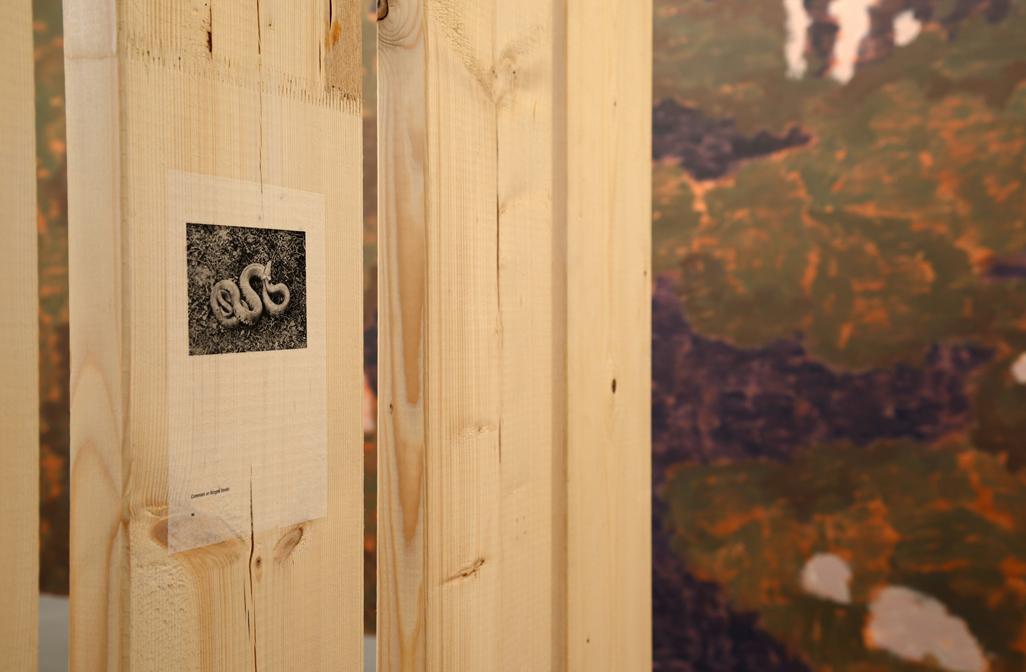
de soie d’une page du livre Direct from Nature, de Richard et Cherry Kearton (partie de ma scénographie),
à l’arrière plan, on aperçoit Eugène, la peinture murale de Paul Cox.
Crédit photographique : Benoît Mauras
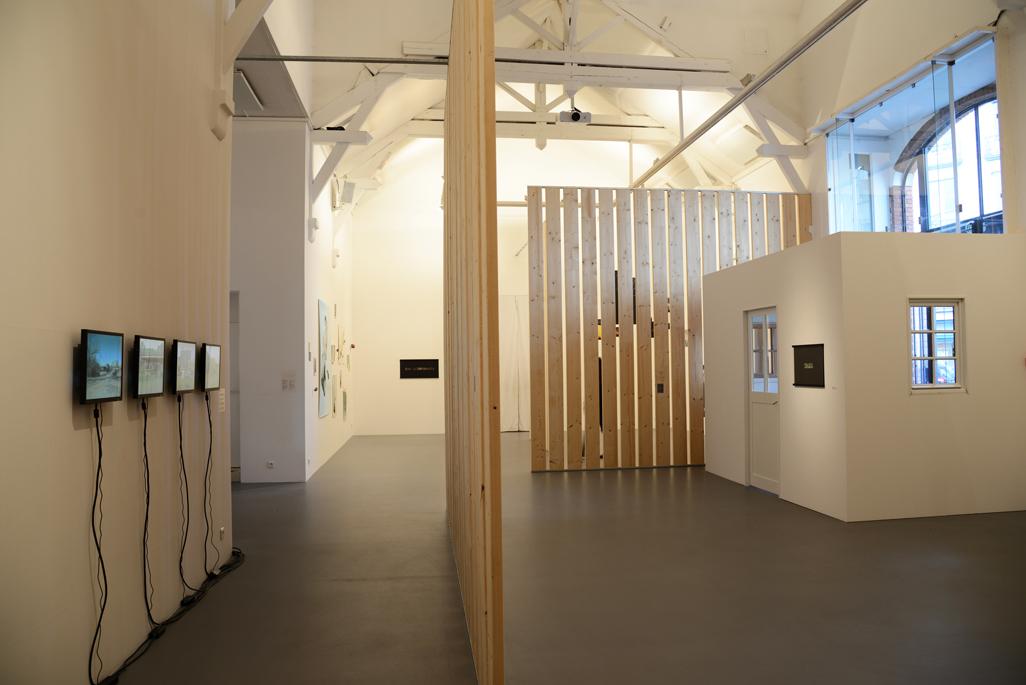
Crédit photographique : Benoît Mauras
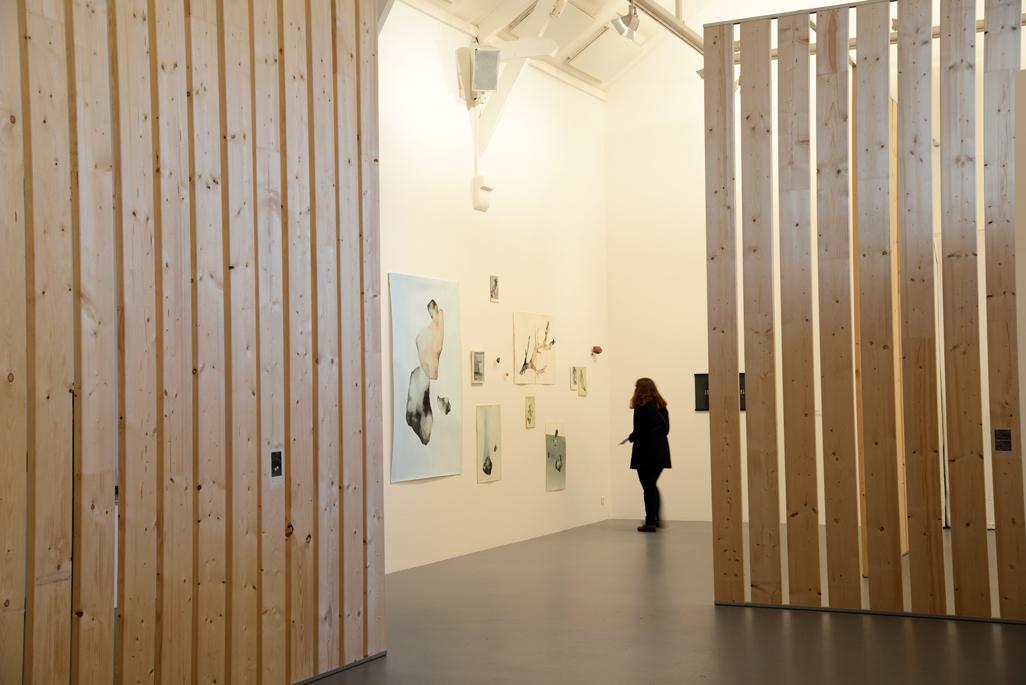
Crédit photographique : Benoît Mauras
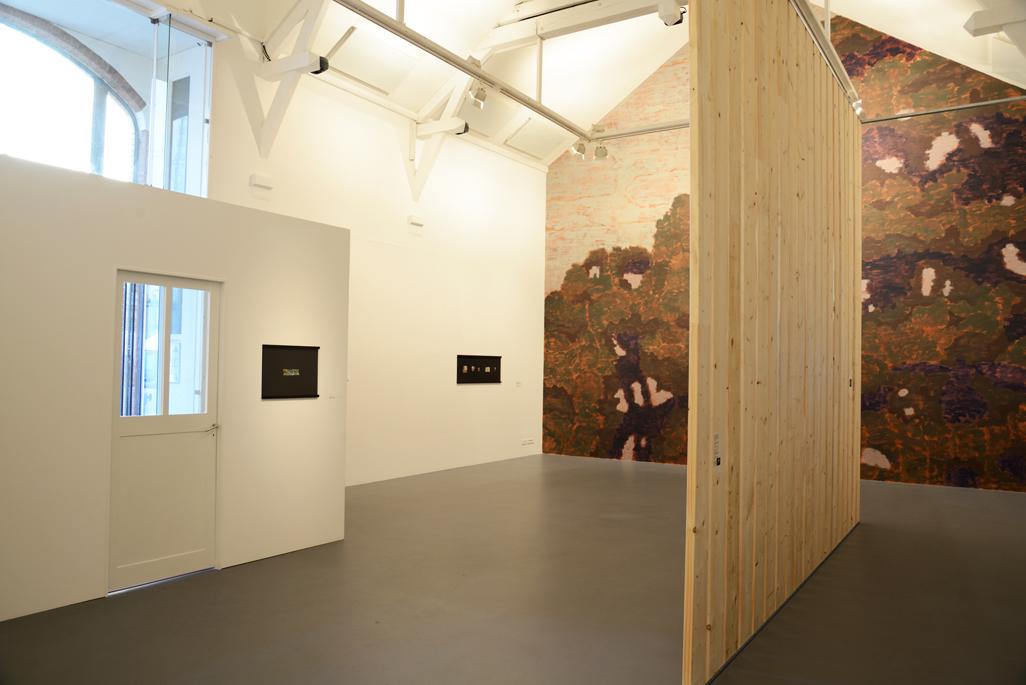
et au fond Eugène, la peinture murale de Paul Cox.
Crédit photographique : Benoît Mauras
II. La Table gronde, solo show of Yves Chaudouët. 13 March - 17 May 2015
The original principal of the Table ronde/Round Table was to be able to meet while doing away with the very principle of precedence, the “risk” of a presidency. Yves Chaudouët starts from this utopia to install at La Criée a round table that is so large—40 metres/130 feet in circumference—that it will not fit completely into the space of the art centre.
The central part of La table gronde – this is its title, which literally means ‘the table grumbles’ – is installed at La Criée. The two other parts of the table are to be found, like satellite half-moons, at the Bout du plongeoir in Thorigné-Fouillard and in the Théâtre de Poche at Hédé. Regularly activated, they blend with the landscape and merge with time passing and the weather, thus giving us La table gronde in the landscape !
Whether these pieces are in a town or in the countryside, La table gronde is an invitation to sit down at it, and settle in: to exchange and talk, to leaf through, make, contemplate, or listen, etc. Its table-top is just a wink at the live spectacle, turning for the occasion into a nomadic scene, it really does support actors, orators and musicians.
At La Criée, around the table, are hung paintings on wood measuring 40 x 40 cm. These pictures are portraits of people who have posed one or more times for the artist. Partly erased and re-used for each sitting, like palimpsests of time on the faces, these portraits come and go, moveable, transportable, and passing. In the art centre’s other rooms, Yves Chaudouët is showing two new films: a fiction which describes the quest of an artist-cum-salmon—performed by the actor Yann Boudaud – looking for a lost spring; a 3D film which extends the ideas of the pictures and the fiction by ticking off the filmed portraits, with sound provided by the voice of the same Yann Boudaud in the process of reading passages from the artist’s last appearance*.
The exhibition La Table gronde is an invitation to wonder who the other is: the painted other, the filmed other, the spoken other, the distant other, the present other. What is involved is nomadism, fair’s fair, gardening in the terrain of art. Wondering also: how (is) the other doing
In partnership with Le Théâtre de Poche, an intercommunal theatre in Bretagne Romantique
And with Au Bout du Plongeoir, an experimental artistic platform and meeting place, Domaine de Tize in Thorigné-Fouillard
“I imagined a round table so large that it can’t be taken whole into the art centre. At La Criée, there’s the central part. The other two bits of the table—half-moons and satellites—are to be found in the Rennes countryside. The first is set up in the Domaine de Tizé, in Thorigné-Fouillard, at Le Bout du Plongeoir. The second is at Hédé-Bazouges, a village in romantic Brittany, at the Théâtre de Poche.
The places housing the parts of La Table gronde share certain features in common:
They are two places of creation, at once bustling, inventive, forward-looking, experimental and festive: as the ruins roundabout illustrate, the surrounding nature there has a romantic beauty about it; they are both situated in places with compound names.
This score and this new geography would give rise to encounters and unexpected uses…. Where you can check whether the rumblings of the table make the same noise in Hédé-Bazouges, Thorigné-Fouillard and Rennes.”
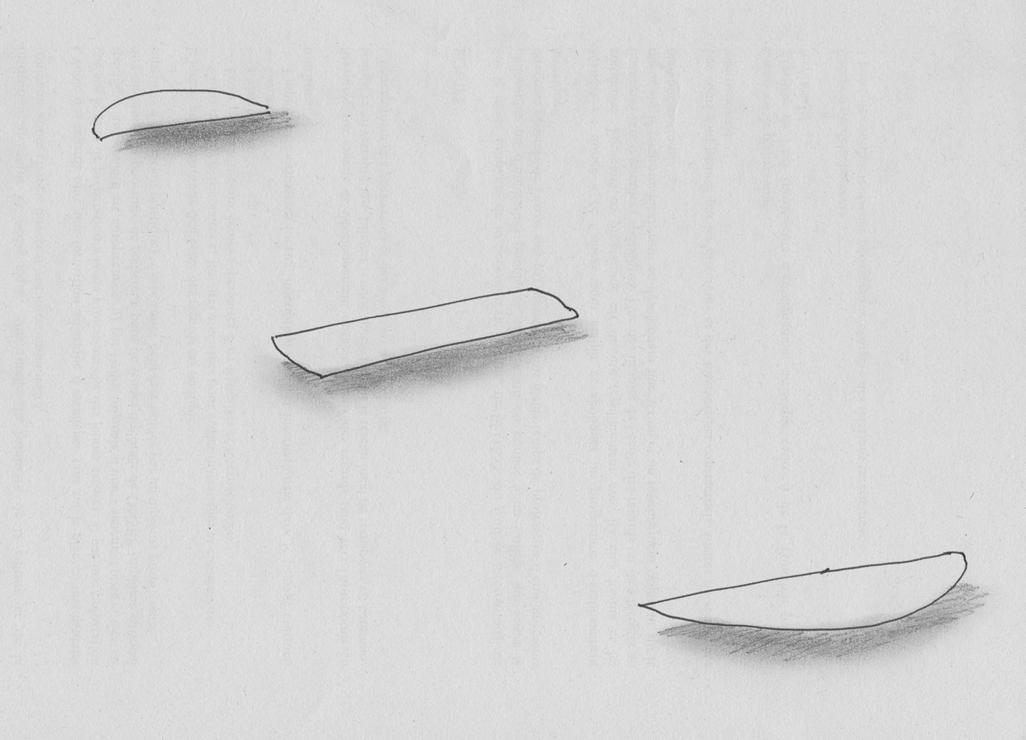
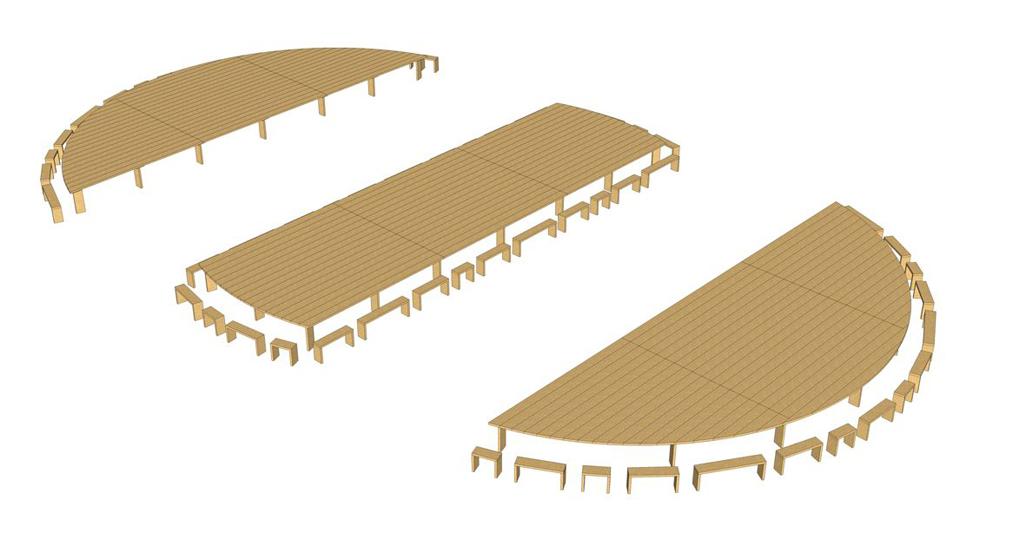
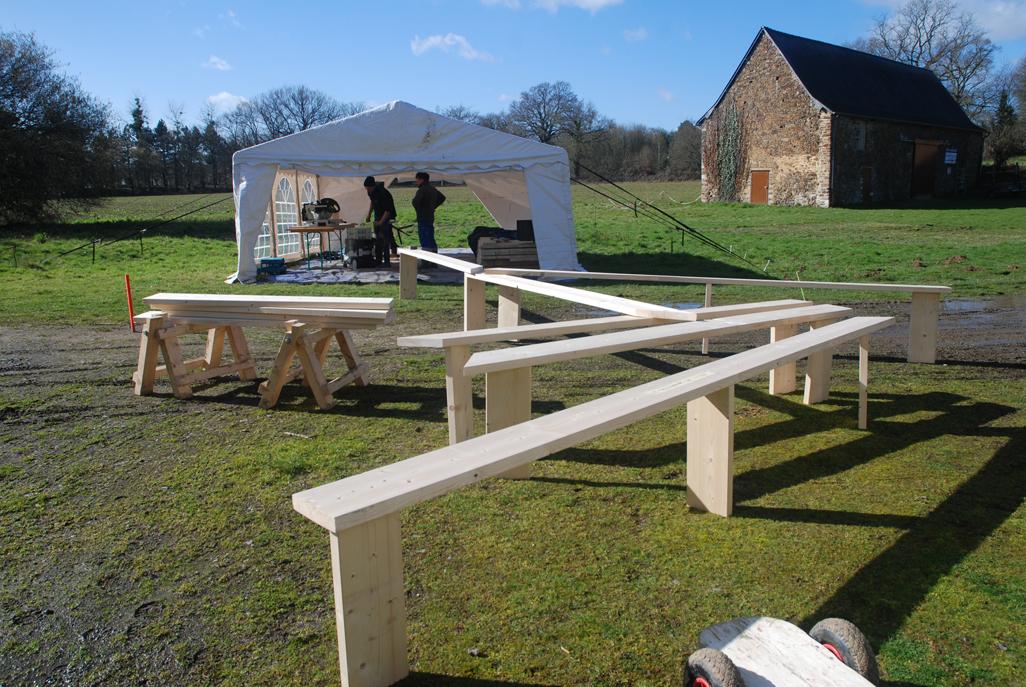
Au bout du plongeoir, Domaine de Tize à Thorigné-Fouillard
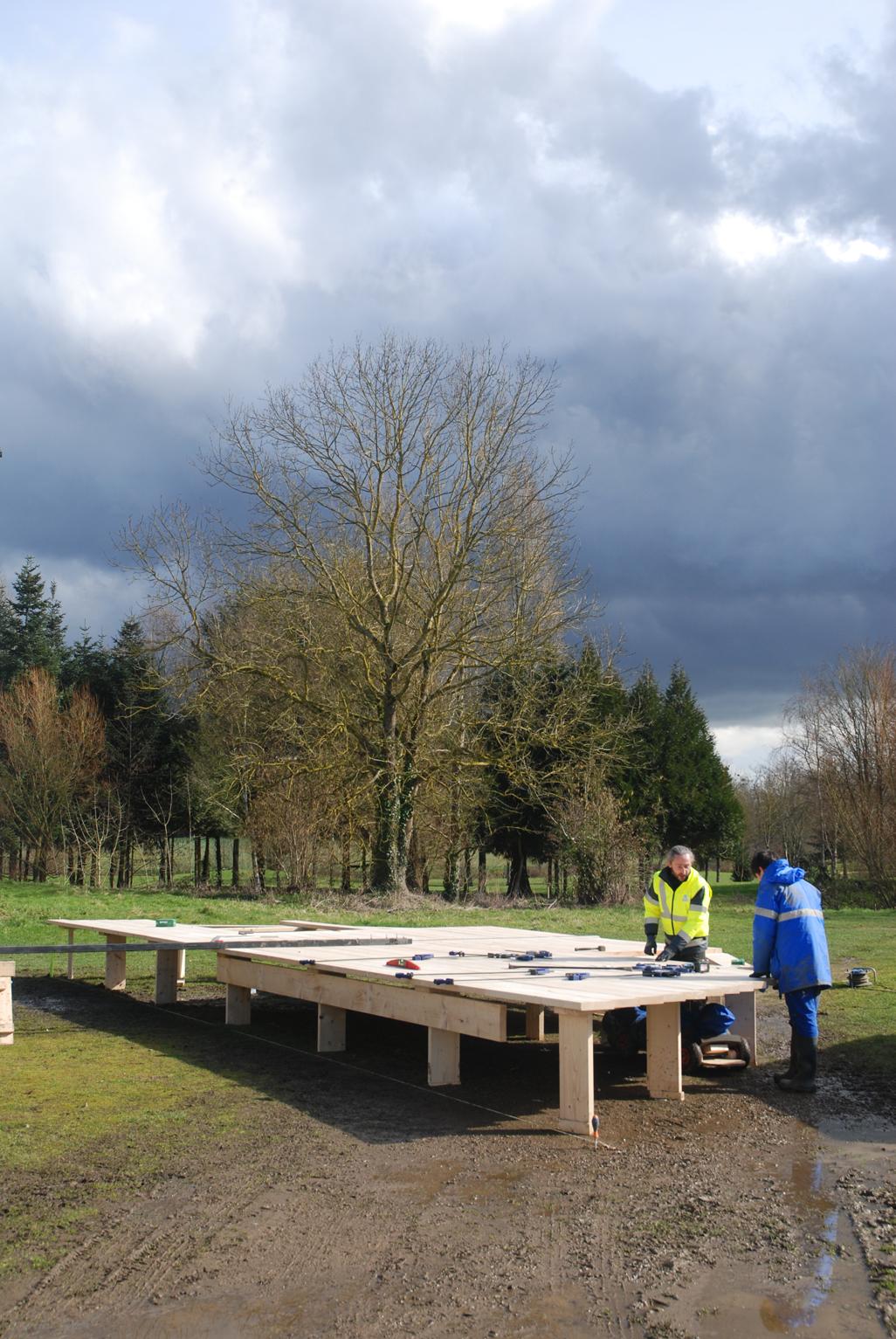
Au bout du plongeoir, Domaine de Tize à Thorigné-Fouillard
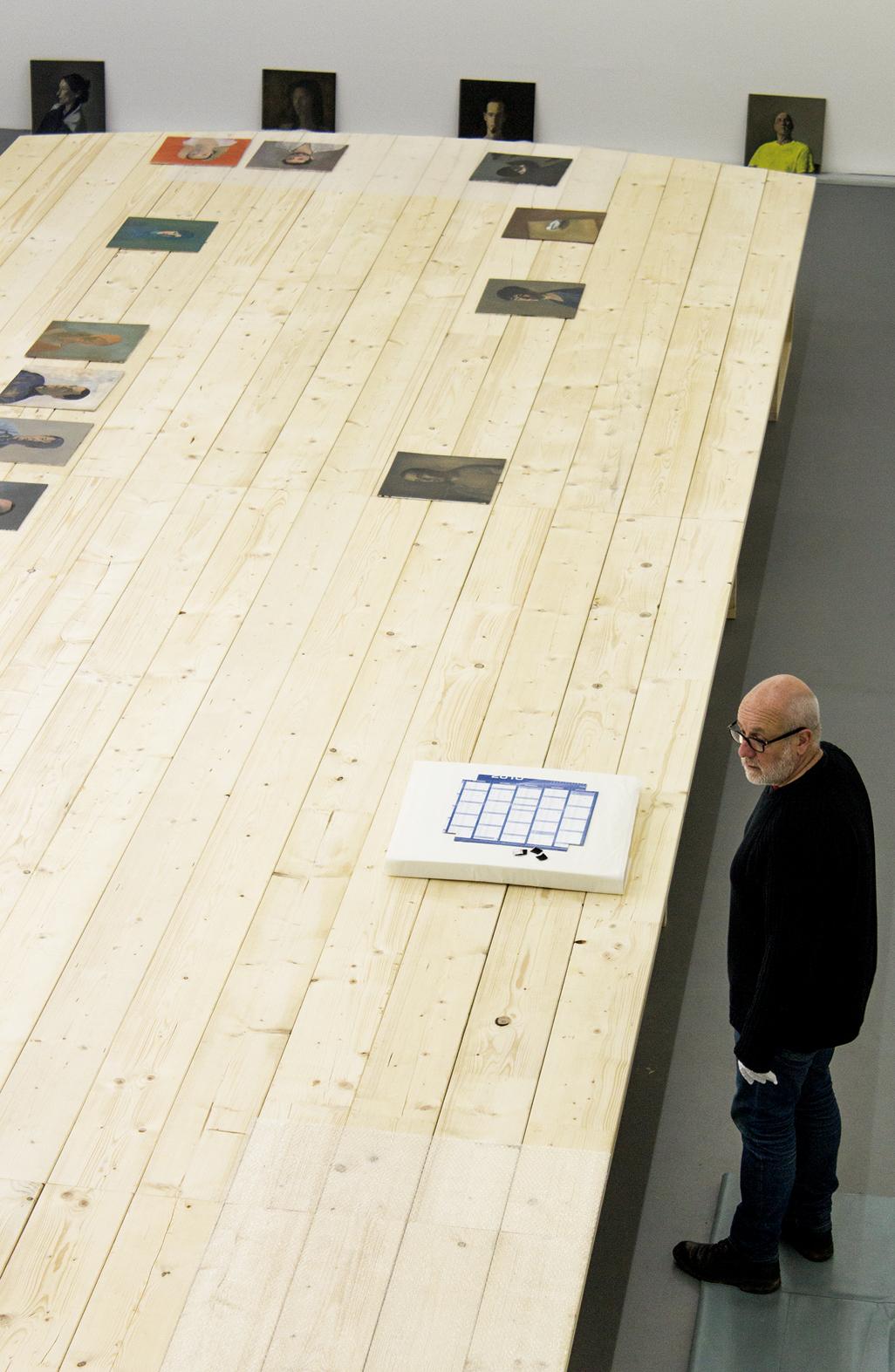
La Criée centre d’art contemporain de la Ville de Rennes
Crédit photographique : Morgan Azaroff, Thomas Portier
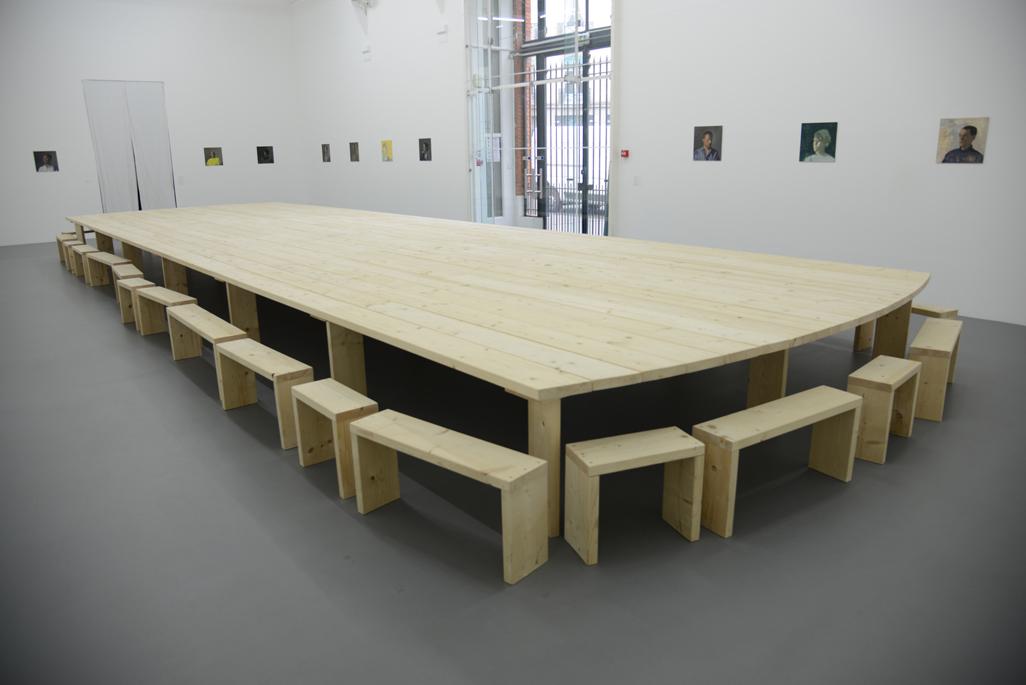
Crédit photographique : Morgan Azaroff, Thomas Portier
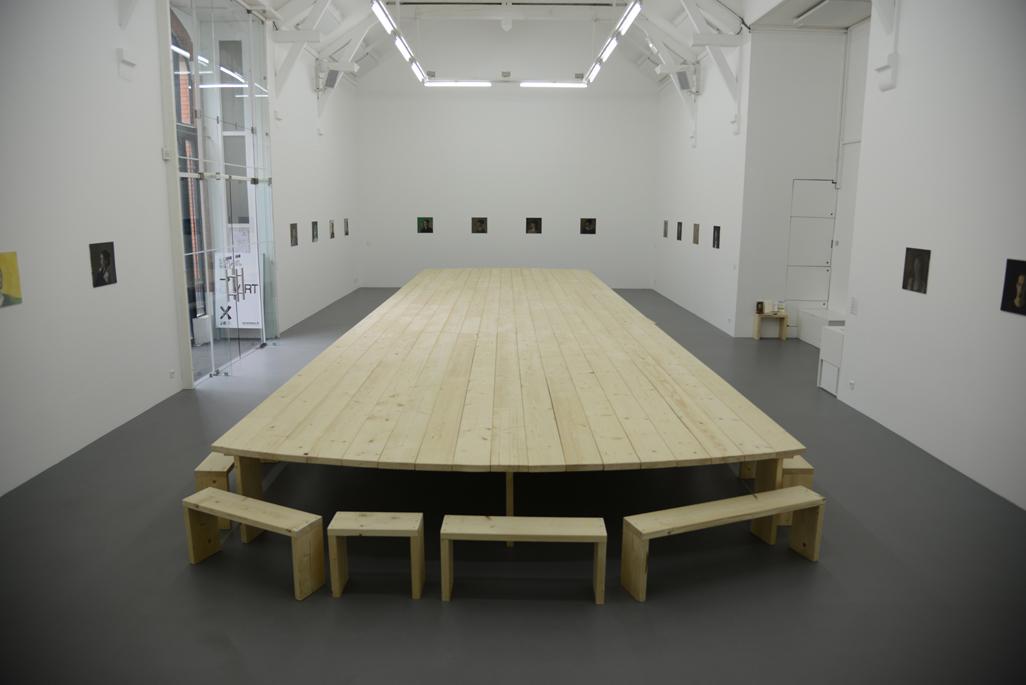
Crédit photographique : Morgan Azaroff, Thomas Portier
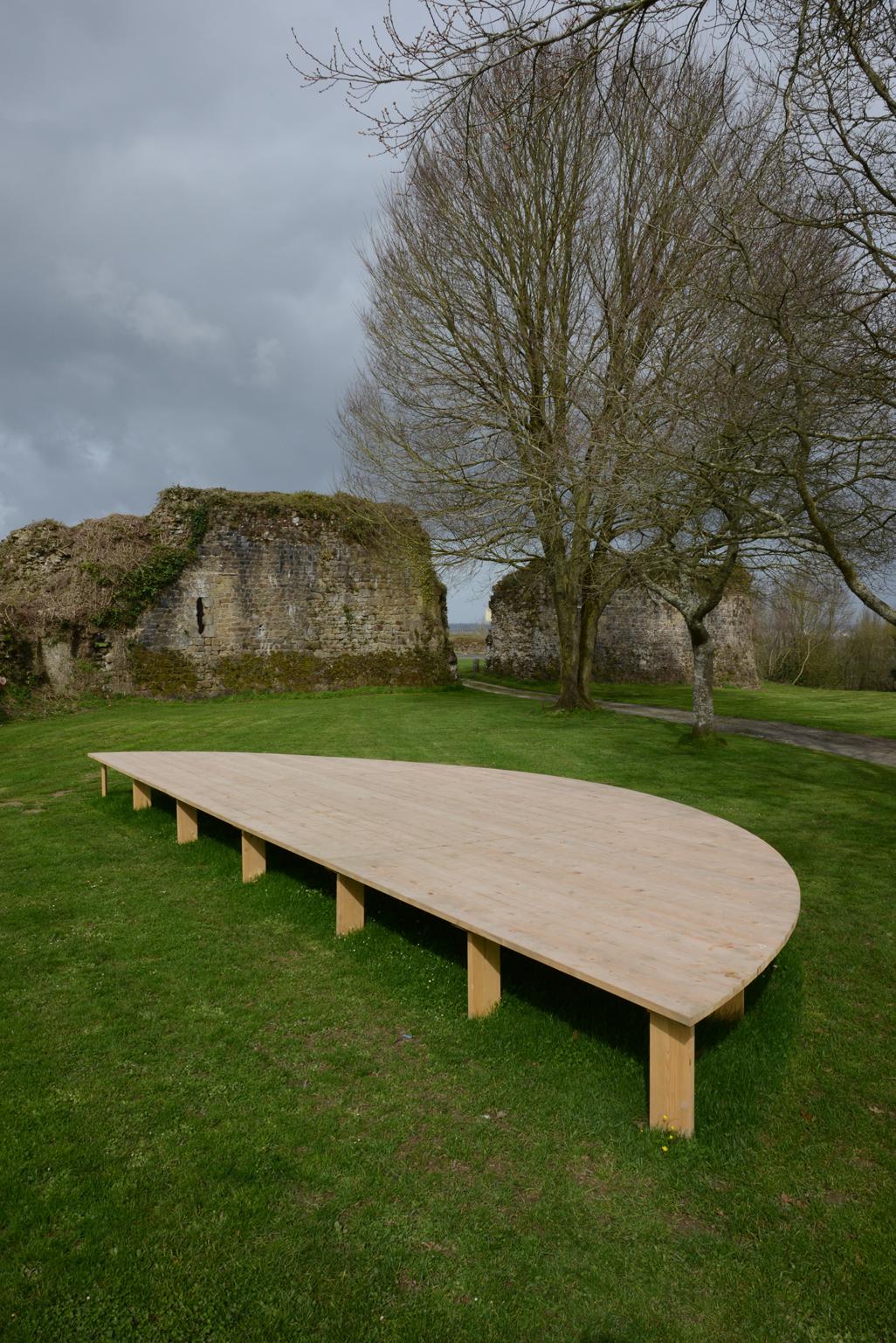
Courtesy de l’artiste / Emanuel Von Baeyer, Londres © ADAGP 2015
Crédit photographique : Benoît Mauras
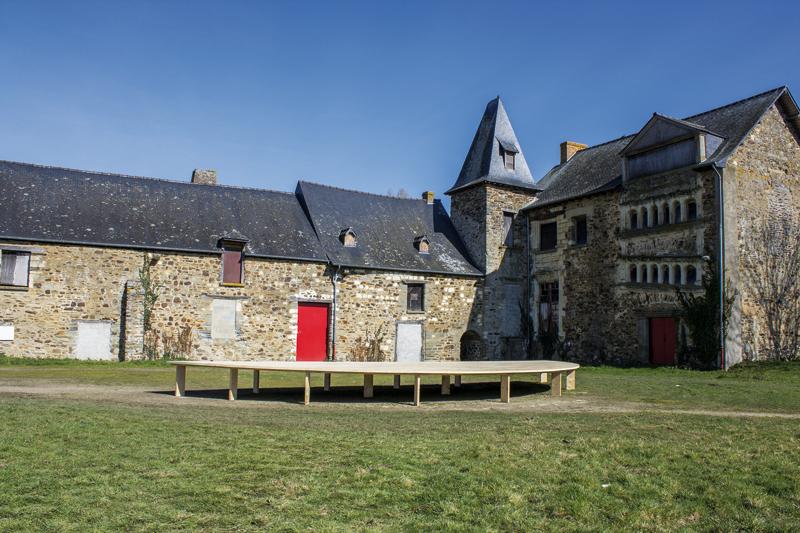
Courtesy de l’artiste / Emanuel Von Baeyer, Londres © ADAGP 2015
Crédit photographique : Benoît Mauras
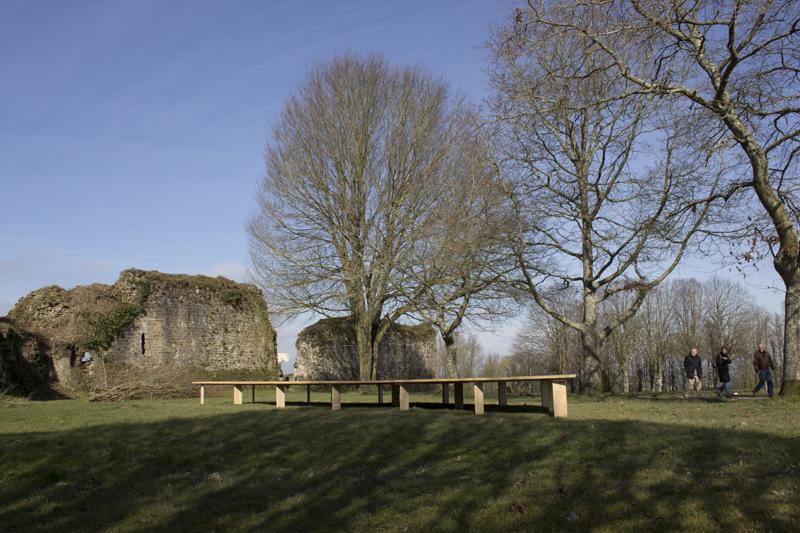
Courtesy de l’artiste / Emanuel Von Baeyer, Londres © ADAGP 2015
Crédit photographique : Benoît Mauras
Les 3 parties de La Table gronde réunies sur le site d’expérimentation Au bout du plongeoir,
Domaine de Tize à Thorigné-Fouillard
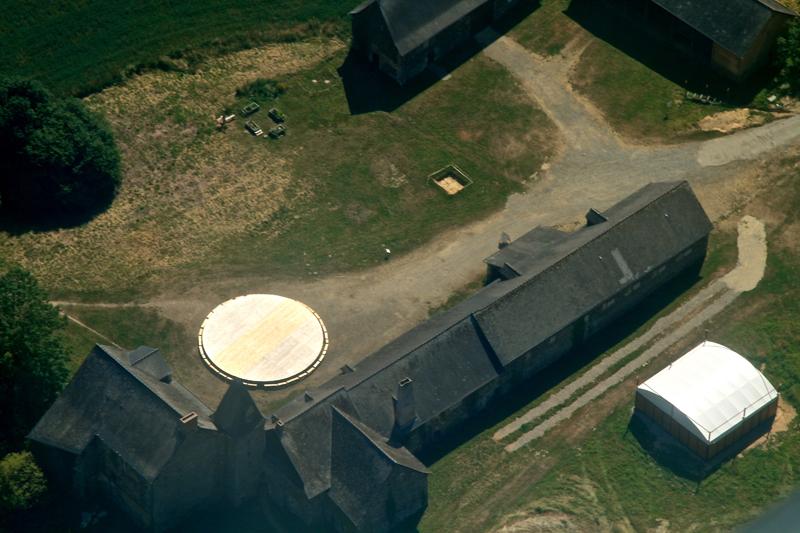
Courtesy de l’artiste / Emanuel Von Baeyer, Londres © ADAGP 2015.
Crédit photographique : Éric Deroost / Au bout du plongeoir
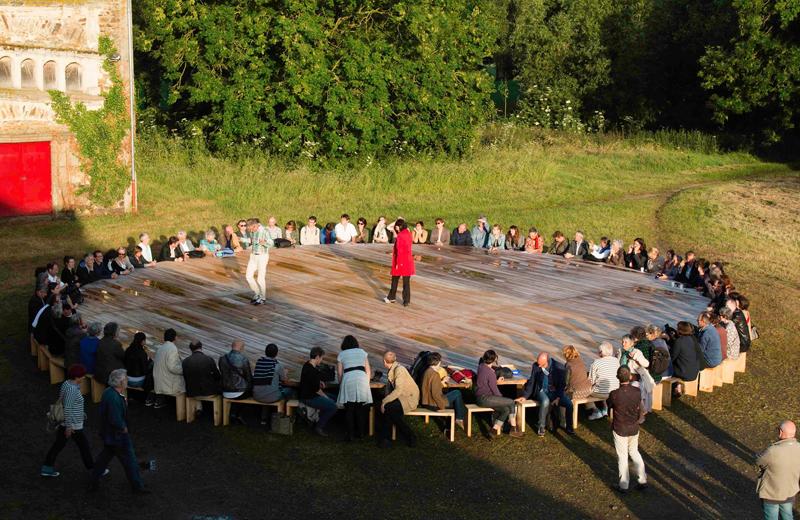
Réunion de l’Association nationale des Paysagistes-Conseils de l’État. Au bout du plongeoir, Domaine de Tizé, Thorigné-Fouillard
Courtesy de l’artiste / Emanuel Von Baeyer, Londres © ADAGP 2015
Crédit photographique : Léna Ollivier / Au bout du plongeoir